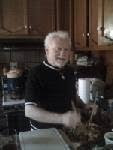Do you suffer from weight-related back pains?
If back woes limit your activities, you’re not alone. About a quarter of adults regularly suffer from low back pain, making it the fifth most common reason Americans visit their doctors.
Basic Steps
Identify and avoid the factors that trigger your back pain. For example, if you are overweight, try to lose weight to take pressure off the back and other parts of your body. Regular exercise can also help. “Strong muscles in your core and other areas take a load off your back,” explains Mark Weidenbaum, M.D., director of orthopedic spine surgery at New York–Presbyterian Hospital/Milstein.
You can avoid aggravating the condition by bending at the knees--not waist--when picking something up. Also, make sure that your computer monitor is at eye level and that your desk is ergonomically designed to reduce strain. If you feel minor pain, keep it from worsening by applying a heating pad, and take acetaminophen or another pain-busting medication.
Extra Protection
Stop smoking. "Smokers have a higher incidence of back problems", Dr. Weidenbaum says, "probably because nicotine interferes with blood flow to the soft tissues".
Sleep on a medium-firm mattress; one that’s superfirm is less likely to help an aching back, advise new guidelines from the American College of Physicians (ACP) and the American Pain Society (APS).
Explore the benefits of short-term psycho(or hypno)therapy. A review of studies by investigators at the VA Connecticut Healthcare System and Yale University last year found that patients using cognitive behavioral therapy reduced the severity of their low-back pain by nearly a third. This isn’t too surprising when you consider that a person’s psychological state has long been known to be related to back pain outcomes: The ACP/APS guidelines note that job dissatisfaction, passive coping strategies and depression have all been shown to worsen healing prospects.
Courtesy: REMEDYHealth Newsletter
P.S. by Jacques:
This is as good a time as any for me to share a bit of interesting trivia illustrating the relationship between Mind and Body, as briefly touched on in the last paragraph just above.
Think of all possible meanings and Mental/ Emotional/ Physical connections of popular expressions such as : "Get off my back!", and the impatient/ upset message it sends...or: "(S)He's a pain in the neck!"...or: "(S)He makes me sick to my stomach!"... or: "I got to get this off my chest!"...or: "Your doing this lifted a big weight off my shoulders!"...
Recommending short-term therapy whenever any of these "pains in the..." afflict you and are reflected by physical aches, pains and illnesses is an excellent suggestion that may help you avoid far greater and costlier (in many ways) repercussions.
Make this a Great Weekend!
Your Friend as always,
Jacques

